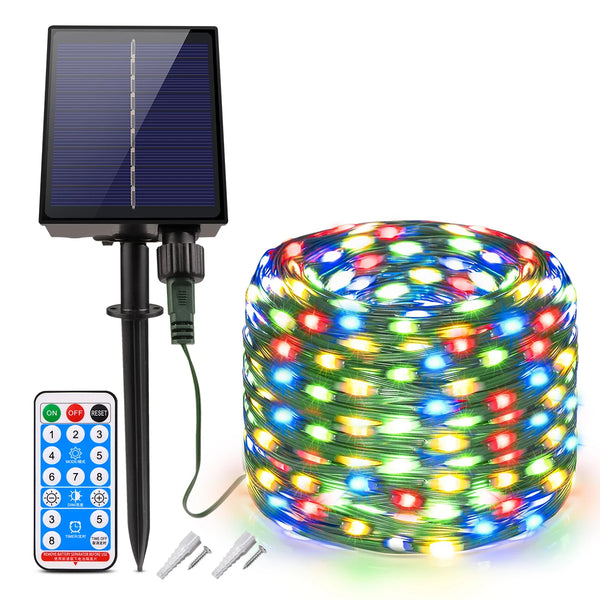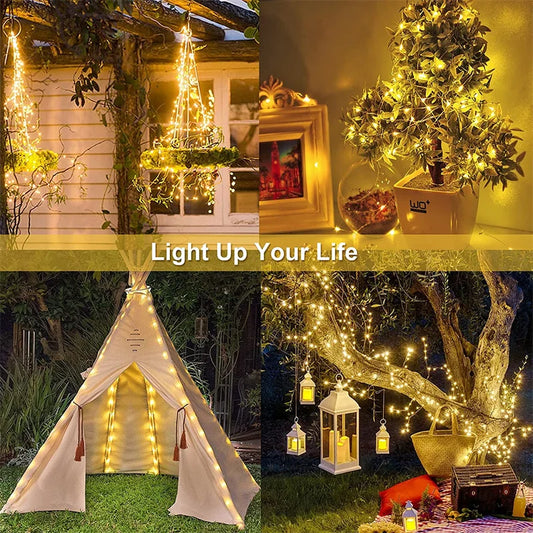
How to Choose the Best Solar Fairy Lights?
Share
Table of Contents
- Understanding Solar Fairy Lights
- Evaluating Brightness and Power
- Considering Battery Capacity and Type
- Determining Durability and Weather Resistance
- Conclusion
Understanding Solar Fairy Lights
LED Solar Fairy Light Outdoor Waterproof
Solar fairy lights are a fantastic way to add charm to your outdoor space without the hassle of electrical wiring. These lights run on solar power, making them energy-efficient and environmentally friendly. When shopping for solar fairy lights, consider factors like the LED type (typically warm white or colorful), design, and length. Most fairy lights come in strings, with varying bulb counts ranging from 20 to 100+. A longer string provides more coverage but may require a larger solar panel to ensure adequate charging.
Key Features to Look For
- LED Type: Warm white LEDs create a cozy atmosphere, while colored LEDs can bring a festive flair.
- Design: Look for decorative shapes or unique patterns that match your aesthetic.
- Length: Measure your space to determine how long of a string you need.
Evaluating Brightness and Power
8 Modes Fast Charge Solar Fairy Lights
Brightness is often measured in lumens, and understanding this measurement is crucial for choosing the right solar fairy lights. For outdoor use, a minimum of 50 lumens is ideal for ambiance, while brighter options (over 100 lumens) can also provide functional lighting.
Solar Panel Efficiency
Not all solar panels are created equal. Look for lights with high-efficiency solar panels that can generate power even on cloudy days. A good panel will typically charge in 6-8 hours of direct sunlight, providing around 8-12 hours of illumination at night.
Brightness Comparison Table
| Type | Lumens | Ideal Usage |
|---|---|---|
| Soft Glow | 20-50 | Ambient lighting |
| Standard Bright | 50-100 | Decorative & functional |
| High Bright | 100+ | Security or visibility |
Further Reading:
Considering Battery Capacity and Type
High-Power Solar Fairy Lights Outdoor Waterproof
Battery capacity is one of the most critical factors when choosing solar fairy lights, as it directly affects how long your lights will shine after sunset. The capacity is measured in milliamp hours (mAh), and a higher mAh rating typically means a longer runtime.
Types of Batteries
-
Nickel-Metal Hydride (NiMH):
- Advantages: NiMH batteries are widely used in solar lights due to their eco-friendly nature and good performance in a variety of temperatures. They generally have a capacity ranging from 600mAh to 1200mAh.
- Disadvantages: They may need replacement every 1-2 years and can be less efficient in extremely cold conditions.
-
Lithium-ion (Li-ion):
- Advantages: Lithium-ion batteries are more efficient, with higher capacities (typically 1000mAh to 2000mAh), allowing for longer light duration. They also charge faster and retain charge better over time, making them ideal for areas with fluctuating sunlight.
- Disadvantages: They tend to be more expensive and may require special handling during disposal.
Runtime Expectations
The runtime of solar fairy lights is influenced not only by battery capacity but also by the efficiency of the solar panel and the amount of sunlight received. Typically, lights with a 1200mAh battery can provide around 8-10 hours of illumination, while those with higher capacities might last up to 12-14 hours on a full charge. Always check the specifications to find the best match for your lighting needs.
Determining Durability and Weather Resistance
Durability is crucial for solar fairy lights, especially if they are intended for outdoor use. Lights should be constructed from robust materials that can withstand harsh weather conditions, including rain, wind, and UV exposure.
Material Considerations
- Casing: Look for lights with housings made of high-quality plastic or polycarbonate, which are known for their resistance to fading and cracking. Metal options like aluminum can provide extra durability but may be prone to rust if not coated properly.
- Cables and Connections: Ensure that the wiring is insulated and water-resistant. Good-quality cables can prevent short circuits and prolong the lifespan of the lights.
IP Ratings and Weather Resistance
The Ingress Protection (IP) rating system indicates how well the lights can resist dust and moisture. A higher IP rating means better protection.
- IP65: This rating means the lights are dust-tight and can withstand low-pressure water jets from any direction, making them suitable for most outdoor applications.
- IP67: With this rating, the lights can withstand immersion in water up to 1 meter for up to 30 minutes. This level of protection is ideal for regions with heavy rainfall or unexpected water exposure.
Additional Considerations
- Temperature Tolerance: Ensure that the lights can operate effectively in the temperature range typical for your area, especially in colder climates where batteries might struggle.
- Warranty and Reviews: Consider products that come with a warranty, as this often indicates a manufacturer's confidence in durability. Reading customer reviews can provide insights into how well the lights hold up over time in various conditions.
By paying attention to battery type, capacity, and the durability of the solar fairy lights, you can make an informed choice that ensures long-lasting and reliable outdoor lighting.
Conclusion
Choosing the best solar fairy lights involves understanding their features, brightness, battery life, and durability. By considering these factors, you can enhance your outdoor space with beautiful and functional lighting. With so many options available, be sure to read customer reviews and compare brands to find the perfect fit for your needs. Solar fairy lights can brighten up your garden, patio, or balcony while being energy-efficient and easy to maintain. Happy decorating!
Further Reading:



























 />
/>
 />
/>
 />
/>
 />
/>
 />
/>